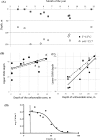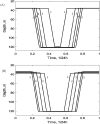Modelling optimal behavioural strategies in structured populations using a novel theoretical framework
- PMID: 31636303
- PMCID: PMC6803682
- DOI: 10.1038/s41598-019-51310-w
Modelling optimal behavioural strategies in structured populations using a novel theoretical framework
Abstract
Understanding complex behavioural patterns of organisms observed in nature can be facilitated using mathematical modelling. The conventional paradigm in animal behavior modelling consists of maximisation of some evolutionary fitness function. However, the definition of fitness of an organism or population is generally subjective, and using different criteria can lead us to contradictory model predictions regarding optimal behaviour. Moreover, structuring of natural populations in terms of individual size or developmental stage creates an extra challenge for theoretical modelling. Here we revisit and formalise the definition of evolutionary fitness to describe long-term selection of strategies in deterministic self-replicating systems for generic modelling settings which involve an arbitrary function space of inherited strategies. Then we show how optimal behavioural strategies can be obtained for different developmental stages in a generic von-Foerster stage-structured population model with an arbitrary mortality term. We implement our theoretical framework to explore patterns of optimal diel vertical migration (DVM) of two dominant zooplankton species in the north-eastern Black Sea. We parameterise the model using 7 years of empirical data from 2007-2014 and show that the observed DVM can be explained as the result of a trade-off between depth-dependent metabolic costs for grazers, anoxia zones, available food, and visual predation.
Conflict of interest statement
The authors declare no competing interests.
Figures





References
-
- Broom, M. & Rychtár, J. Game-theoretical models in biology (CRC Press, 2013).
-
- Gavrilets, S. Fitness landscapes and the origin of species (MPB-41), vol. 41 (Princeton University Press, 2004).
-
- Davies, N. B., Krebs, J. R. &West, S. A. An introduction to behavioural ecology (John Wiley & Sons, 2012).
Publication types
LinkOut - more resources
Full Text Sources

